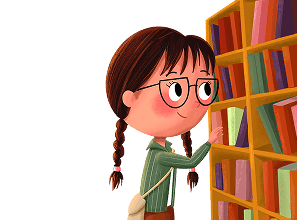Stories shape our world. But even more importantly—they shape our sense of the world. And when it comes to kids? That power is exponential.
That’s why I believe in interactive storytelling.
Not just as a trend. Not just as an activity.
But as a transformational tool for kids to see themselves as creators—not just consumers.
This isn’t theoretical for me.
It’s the core of my publishing model. And the core of my mission.
What Is Interactive Storytelling (Really)?
At its surface, interactive storytelling means the reader contributes to the creation of the story: making choices, influencing outcomes, or adding their voice to the plot.
But when you dig deeper, it becomes something more:
It’s a way of giving kids ownership of the narrative—both on the page, and in life.
Most “interactive” models stop at “choose your path” and then, that path was pre-determined.
Mine goes further: create the path. Shape the theme. Choose the words. Design the characters. Co-author the book. And then watch and see where it takes you.
I call this model Participatory Publishing and it changes everything.
From Audience to Author: Kids as Creators
Too often, we treat kids like they’re future thinkers.
But here’s the truth: they are current thinkers. Current builders. Current idea-generators.
The problem is—they rarely get the mic.
That’s why kids as creators is a pillar of everything I build. Through creativity challenges like Theme Team, Word Weaver, and Sketch-Off, kids submit ideas that are actually used in my books. The winners are featured in the final published work and donate 25% of the launch royalties to a cause each one of them cares about.
This isn’t make-believe.
This is real-world authorship. With real stakes. And real impact.
Why Creative Literacy Is Important—Now More Than Ever
We hear a lot about early literacy. Phonics. Reading comprehension. All important.
But creative literacy? That’s the next level. And it might even need to start before we get to the mechanics.
Creative literacy isn’t just the ability to read. It’s the ability to imagine. To think independently. To express boldly. And to shape meaning from chaos.
It’s not about filling in blanks—it’s about making new blanks to begin with.
In a world that often pressures kids to “stay in the lines,” creative literacy is how we teach them to draw new lines entirely. And storytelling—especially interactive storytelling—is how we get there.
From Snails to Suffragists: How Kids Create Magic
One of the best examples of this? A recent creativity challenge.
Two wildly different themes rose to the top:
- Women’s Suffrage
- A Race Between a Snail and a Turtle
At first glance, totally unrelated. But look again—both tap into the same core question:
Who gets to shape the story?
Whether it’s voting rights or who’s allowed to compete, these kids were asking the right questions—and shaping stories that matter.
That’s creative literacy in action.
That’s interactive storytelling at its best.
Why Interactive Storytelling Works So Well for Kids
✅ It creates buy-in (when they help build it, they care more about it)
✅ It fosters confidence (their ideas matter—publicly)
✅ It builds community (they’re contributing to something larger than themselves)
✅ It develops real-world skills (creativity, critical thinking, empathy)
This isn’t just feel-good fluff. It’s the most formative kind of literacy we can offer:
The kind that shows kids their voice can shape something permanent.
Want to Help a Kid Shape the Next Story?
Here’s how you can join the movement:
📌 Sign up for the Next Creativity Challenge.
📌 Share this post with someone who loves kids, stories, or big ideas.
📌 Join the Story Shapers mailing list. That’s where all the behind-the-scenes magic happens—and where your voice helps shape the next story.
We’re not just teaching kids how to read.
We’re teaching them how to create the world they want to read about.
Let’s take aim—and shape the future together.



